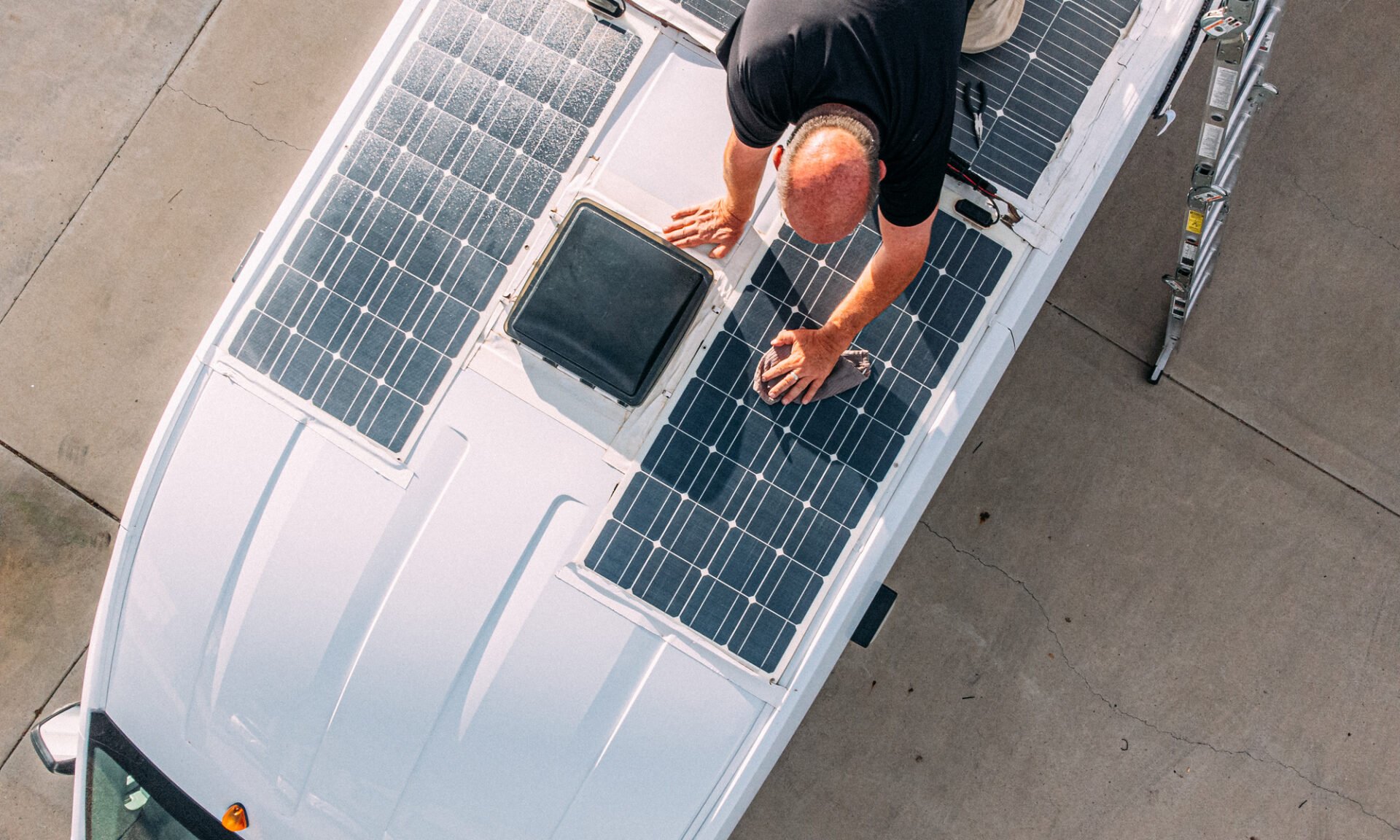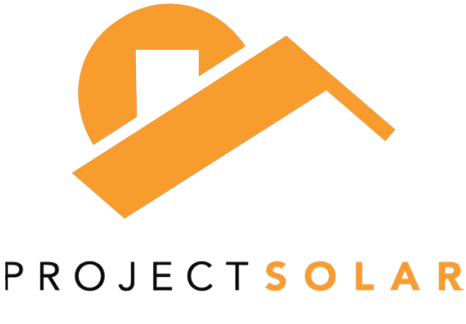What Are Flexible Solar Panels?
Flexible solar panels are cheaper than regular solar panels, but they're not great for powering a whole home.

Some or all of the mortgage lenders featured on our site are advertising partners of NerdWallet, but this does not influence our evaluations, lender star ratings or the order in which lenders are listed on the page. Our opinions are our own. Here is a list of our partners.
Flexible solar panels are solar panels made with thin materials that can bend. That means they can be applied to many more surfaces than standard rigid solar panels. However, flexible solar panels are less efficient and durable, so they aren’t usually recommended for use on your roof.
How flexible solar panels work
Flexible solar panels work in much the same way traditional rigid panels work. Standard solar panels are made with silicon photovoltaic cells that are often smaller than the thickness of four human hairs. The cells are encased in protective glass and/or plastics and connected together to form solar panels. When energy from the sun hits the solar cells in the panels, that creates an electrical charge, generating electricity .
What makes flexible solar panels different is that they’re made with even thinner solar cells, often encased in flexible polymer . Some flexible solar panels are made by printing photovoltaic material directly onto a flexible surface, but these are less commonly available.
Because they can bend and are portable, flexible solar panels can be used for off-grid solar applications. For example, you can add them to your RV, van, or boat, or take them camping or hiking with you. Some flexible panels can fold as well as bend.
You probably won’t find a solar installer who will install flexible solar panels on your roof. But flexible solar panels can be a great choice for portable applications.
How much do flexible solar panels cost?
According to EnergySage, a solar and home energy product comparison marketplace, the top flexible solar panels cost between $80 and $290 per panel.
One reason for the price range is wattage, which measures the power output of solar panels. Typical residential solar panels are rated at 400 watts, but lower-priced flexible panels might have an output of only 50 watts. More expensive flexible solar panels might produce 175 watts.
Price differences may also reflect whether the panels come with the necessary equipment to operate them. To use flexible solar panels, you’ll need a few components, such as a solar inverter. Some flexible solar panels are sold as part of a kit that includes everything you need, and some are sold separately .
» MORE: How many solar panels do I need?
Pros of flexible solar panels
Flexible solar panels have a number of advantages that make them a great option when you need portable solar.
Versatility
Because they can bend, flexible solar panels can attach to uneven or rounded surfaces, such as the curved roof of a van or boat. Because they’re lighter than traditional solar panels and don’t require a mounting system, they can be installed on structures that are weaker than the roof of your home, such as a shed, awning or carport. They come in different shapes and sizes, so you can even attach a flexible solar panel to a backpack.
Ease of installation
Flexible solar panels are much easier than standard panels to install and uninstall; they can be attached to surfaces using adhesives or magnets. That makes them a good choice for DIY solar projects.
Portability
The light weight and easy installation of flexible solar panels makes it easy to transport them to different locations and move them from one surface to another. For example, you can take a panel on a road trip in your van and then take it hiking. Unlike with traditional solar panels on your roof, if you move it’s relatively easy to take your flexible solar panels with you.
Affordability
Although putting solar panels on your roof may increase the value of your home and come with tax benefits, the cost of rooftop solar panels can be high. Flexible solar panels have a much lower cost. Depending on what you’ll use the panels for, you might need only one or two panels.
Cons of flexible solar panels
Although flexible solar panels have a number of advantages, you should be aware of a few drawbacks to these panels.
Efficiency
Traditional solar panels’ average efficiency is about 21% — meaning they convert about a fifth of the sunlight that hits them into electricity. Flexible solar panels are about 5% to 10% less efficient. That means it takes a higher number of flexible solar panels to generate the same amount of energy. This is not generally an issue for most uses of these panels, such as powering a few devices.
Power
The average power output of flexible solar panels is only about 100 watts, compared to 400 watts for traditional rooftop solar panels. So you can’t power as many devices with a 100-watt flexible solar panel. For example, a typical LED light bulb uses two to 18 watts of electricity, a laptop uses 30–70 watts and a refrigerator uses 300–800 watts.
You can use this Department of Energy calculator to get an idea of how much power various appliances use, or you can check your device’s user manual or Energy Star rating.
Durability
Because of their thinner cells and coating, in addition to their greater likelihood of wear and tear if you take them on the road or the trail, flexible solar panels are less durable than their traditional counterparts. They don’t last as long as traditional panels, and they tend to come with shorter warranties.
» MORE: How long do solar panels last?
Are flexible solar panels worth it?
With their shorter lifespans and low efficiency, flexible solar panels aren’t recommended for your roof. However, they’re a great option when you need lightweight, portable solar. Flexible solar panels can also be a good option to power a few devices in your home during power outages.
As flexible solar panels become more popular, researchers are finding ways to manufacture even lighter, ultrathin solar cells that can be added to any surface — including stretchable organic solar cells for wearable solar. As these techniques advance, there will be even more flexible solar panel options .
Article sources
NerdWallet writers are subject matter authorities who use primary,
trustworthy sources to inform their work, including peer-reviewed
studies, government websites, academic research and interviews with
industry experts. All content is fact-checked for accuracy, timeliness
and relevance. You can learn more about NerdWallet's high
standards for journalism by reading our
editorial guidelines.
- 1. U.S. Department of Energy. Solar Photovoltaic Technology Basics. Accessed May 16, 2025.
- 2. National Institutes of Health. Overview of the Current State of Flexible Solar Panels and Photovoltaic Materials. Accessed May 16, 2025.
- 3. EnergySage. Flexible solar panels: Everything you need to know. Accessed May 16, 2025.
- 4. Massachusetts Institute of Technology. Paper-thin solar cell can turn any surface into a power source. Accessed May 16, 2025.
More like this
Related articles
AD
Save On Solar Without the Middleman
Free Instant Quote
on Project Solar's website

AD

Save On Solar Without the Middleman
- $750 OFF install with NerdWallet;
- SolarCare™: top-tier warranty & 25-year production guarantee;
- No sales commissions mean premium equipment & tech at up to half the price.

Free Instant Quote
on Project Solar's website








